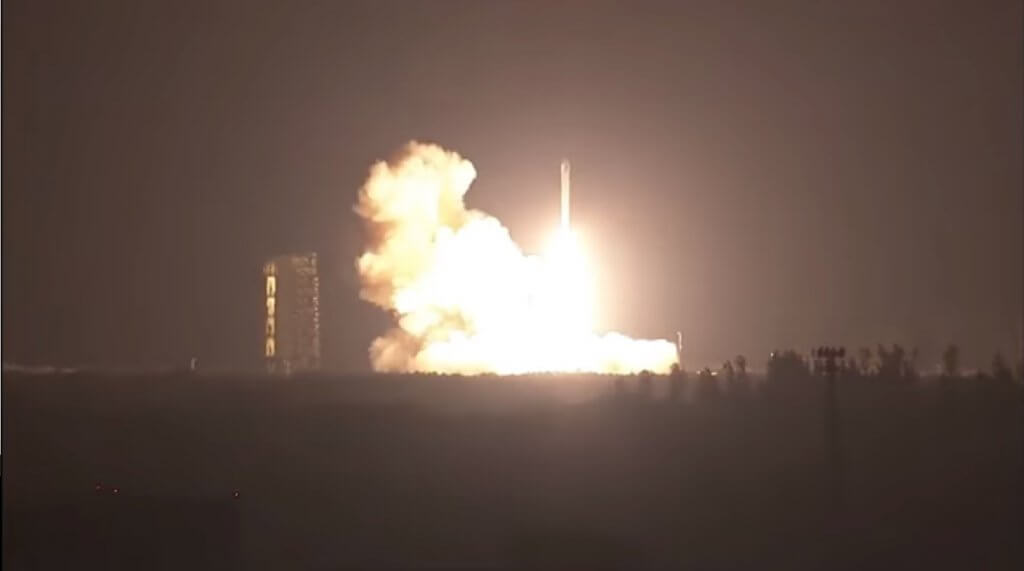In its first showing at Cape Canaveral, Florida, a five stage version of the Minotaur IV light launch vehicle lifted off at 0604 GMT on 26 August, carrying an experimental space surveillance satellite ORS-5 (SENSORSAT PRECURSOR) to Low Earth Orbit (LEO). From its position in LEO, the satellite is designed to observe satellites in the Geosynchronous orbital arc.
The rocket lifted off from the rarely utilised Launch Complex-46 (LC-46), last used in 1999. The Minotaur IV rocket – similar to the Russian Dnepr vehicle – uses components from decommissioned ICMBs (Intercontinental Ballistic Missiles). In this case, the launch vehicle uses three solid-fuel stages from a cold-war era Peacekeeper Intercontinental Ballistic Missile (ICBM) which have been adapted by US-manufacturer Orbital ATK. The fourth and fifth stages use Orion 38 solid rocket engines.

The Minotaur IV rocket lifts off from Cape Canaveral carrying ORS-5. Courtesy of Orbital ATK and YouTube
The primary payload of the mission was the 140 kg ORS-5 (SENSORSAT PRECURSOR), spacecraft designed to test out systems to optically monitor satellites and objects in the GEO belt from LEO. The mission will contribute to the growing demand from the military for enhanced Space Situational Awareness (SSA) – space surveillance – capability.
In addition, three cubesats were on-board the launch which were deployed in the parking orbit before the fourth stage’s separation from the fifth stage. These were two PROMETHEUS-2 (2.2 and 2.4) 1.5U Cubesats designed by Los Alamos National Laboratory (LANL), to help evaluate the operational utility of cubesats, and the DHFR satellite developed by DARPA and Utah State University Research Foundation – SDL. It is a 3U Cubesat to host a high-frequency receiver experiment.
Comment by David Todd: Orbital ATK would like to compete for commercial launches using the Minotaur IV, but is officially banned by US legislation from doing so given its ballistic missile derivation.








